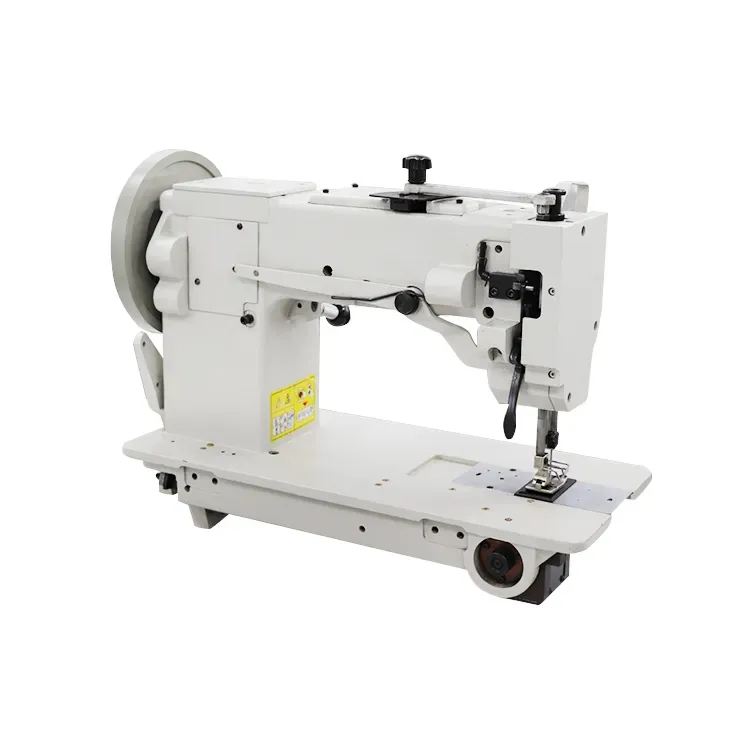chain stitch machine
The Chain Stitch Machine Revolutionizing Textile Production
In the ever-evolving world of textile manufacturing, few innovations have been as transformative as the chain stitch machine. This specialized sewing machine has played a pivotal role in the garment industry, offering speed, efficiency, and distinct stitching characteristics that cater to a variety of stitching applications.
The chain stitch machine operates using a simple yet effective mechanism, where multiple threads form a continuous loop, resulting in a chain-like pattern. This design not only allows for faster sewing compared to conventional machines but also produces a flexible seam that can stretch without breaking. Consequently, chain stitch machines are widely used in manufacturing garments that require resilience and durability, such as denim, activewear, and workwear.
One of the primary advantages of the chain stitch is its ability to create a decorative finish. Manufacturers often leverage this feature for apparel with intricate designs, adding aesthetic appeal without sacrificing functionality. Additionally, the chain stitch is ideal for situations where seam flexibility is vital. For instance, in activewear, the extenuating physical movements require seams that can endure stress while maintaining their integrity.
Chain stitch machines are available in various types to accommodate different industrial needs. The most common variants include single-thread chain stitch machines and two-thread chain stitch machines. Single-thread machines rely on one needle thread, making them suitable for lightweight fabrics, while two-thread machines use a combination of needle and looper threads, ideal for heavier materials. This versatility makes chain stitch machines indispensable in a commercial sewing environment, enhancing productivity and meeting diverse market demands.
chain stitch machine

Another significant benefit of chain stitch machines is their efficiency in producing flat-lock seams. This type of seam is frequently used in knit fabrics and is particularly popular in the production of activewear and lingerie. The flat-lock seam provides a smooth finish on both sides, reducing irritation against the skin. Furthermore, this seam construction allows for greater flexibility, making it a favorite among athletes who need garments designed for movement.
Moreover, chain stitch machines contribute to cost savings in production. Their speed and efficiency lead to shorter sewing times, allowing manufacturers to meet tight deadlines and increasing overall output. Coupled with their durable stitch quality, this translates into decreased rework rates and lower material waste, thereby enhancing profitability.
As manufacturers continue to prioritize sustainability, the role of chain stitch machines in producing eco-friendly garments is becoming increasingly relevant. The efficient use of materials and the ability to create strong, lasting seams reduce the frequency of garment disposal, supporting a more sustainable approach to fashion.
In conclusion, the chain stitch machine has solidified its place as an essential tool in the textile manufacturing industry. From its unique stitching capabilities to its versatility and efficiency, it provides solutions that cater to both practical and aesthetic garment requirements. As the industry progresses, the innovation surrounding chain stitch technology will likely continue to evolve, driving the future of fabric production and playing a crucial role in meeting consumer needs. Whether it’s high-performance athletic gear or stylish everyday wear, the chain stitch machine remains a fundamental component of modern garment manufacturing, paving the way for new possibilities in fabric and fashion design.
-
Zigzag Sewing MachineNewsMay.12,2025
-
Single Needle Sewing MachineNewsMay.12,2025
-
Overlock Sewing Machine PriceNewsMay.12,2025
-
Heavy Duty Industrial Sewing MachineNewsMay.12,2025
-
FIBC Sewing MachineNewsMay.12,2025
-
Cylinder Bed Sewing MachineNewsMay.12,2025
-
Revolutionizing Sewing with CNC TechnologyNewsMar.28,2025





























